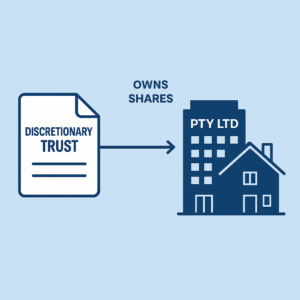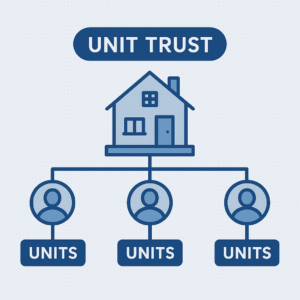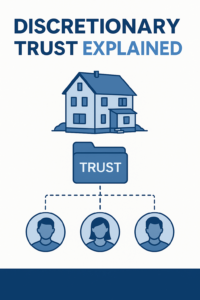A Practical Guide: How a Unit Trust Helped an Australian Family Invest in Property Together
Introduction
At Trustify.au, we help Australians understand and establish the right trust structures for their needs. In this case study, we walk through how one Brisbane-based family used a unit trust to invest in property together, manage shared finances efficiently, and clearly define ownership between multiple contributors.

Background
Meet the Taylors, a middle-income family in Brisbane. They had saved $200,000 and wanted to purchase a $1 million investment property. Their goal was to collaborate with extended family, spread financial responsibilities, and maintain clear ownership rights.
The Challenge
The Taylors wanted a structure that would:
- Allow multiple family members to co-invest
- Clearly outline each person’s share of the investment
- Simplify shared financial management
However, they also had to consider the potential limitations of each structure in areas like tax treatment, asset protection, and succession planning.
The Solution: A Unit Trust Structure
After consulting Trustify.au, the Taylors decided to set up a unit trust. Here’s how it was structured:
- Formation: A unit trust was created. Each participant purchased units in the trust based on their financial contribution. The Taylors held 50%, a sibling 30%, and their two adult children 20% combined.
- Trustee: A corporate trustee was appointed to manage the trust and provide limited liability.
- Property Purchase: The unit trust used the $200,000 as a deposit to buy the $1 million investment property and financed the remainder with a loan.
- Financial Management: All income, expenses, and repayments were managed through the trust, with profits distributed in line with unit holdings.
Benefits Realised
- Shared Ownership: Each unitholder had a clear, legal stake in the trust, matching their investment.
- Centralised Financial Management: All finances related to the property—including mortgage payments, rental income, and expenses—were handled under one structure.
- Collaborative Investment: The structure enabled family members to pool resources efficiently and make collective decisions.
Key Considerations and Limitations
- Asset Protection: While the trust held the property, units owned in personal names could still be pursued by creditors. Therefore, asset protection is limited unless units are held in a more protected entity. If greater protection and future flexibility are desired, each group or individual can consider holding their units through a family trust. However, this can limit access to negative gearing benefits, as family trusts cannot pass on tax losses in the same way.
- Tax Treatment: Income must be distributed according to unit ownership, regardless of individual tax positions. This can reduce flexibility in optimising tax outcomes.
- Estate Planning: Units are personal property and must be transferred through a will or estate, offering limited flexibility compared to discretionary trusts.
- Limited Flexibility in Unit Transfer: Transferring units can trigger tax or duty consequences and often requires formal documentation.
Outcome
Five years later, the property increased in value to $1.4 million and generated steady rental income. The unit trust allowed for consistent management and clear tracking of each member’s interest, helping the family avoid disputes and expand their investment goals under one trusted structure.
Conclusion
While not the most tax-efficient or flexible structure, a unit trust can be ideal for groups who want to invest together with defined ownership rights and streamlined financial management. At Trustify.au, we help Australians understand the pros and cons of different trust options and guide them through setup and compliance.
Want to explore if a unit trust is right for your situation? Visit Trustify.au today and start your journey with confidence.
Others
-
October 20, 2025 Buying Property Under Your Personal Name in Australia: Pros and Cons
-
October 18, 2025 Service Trust Business Structure in Australia




